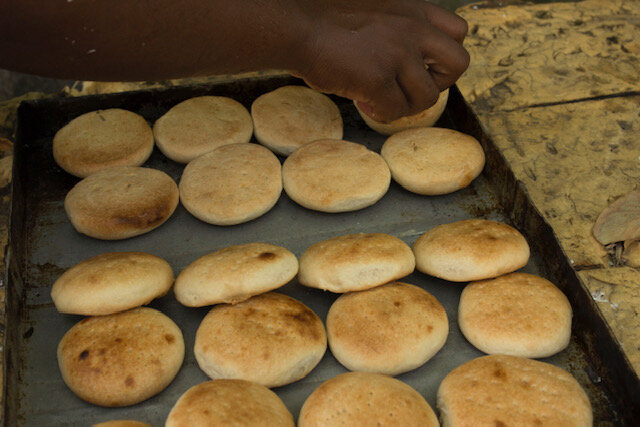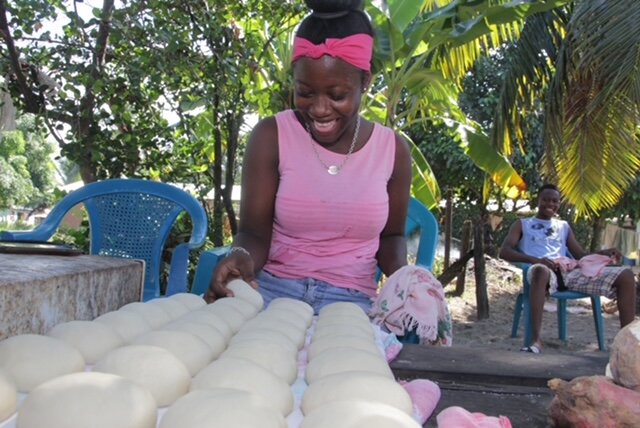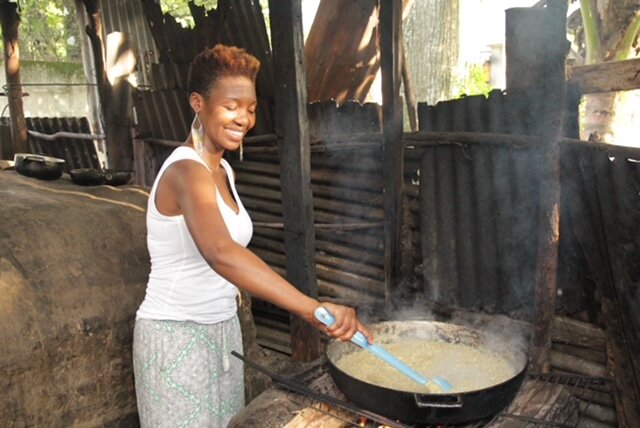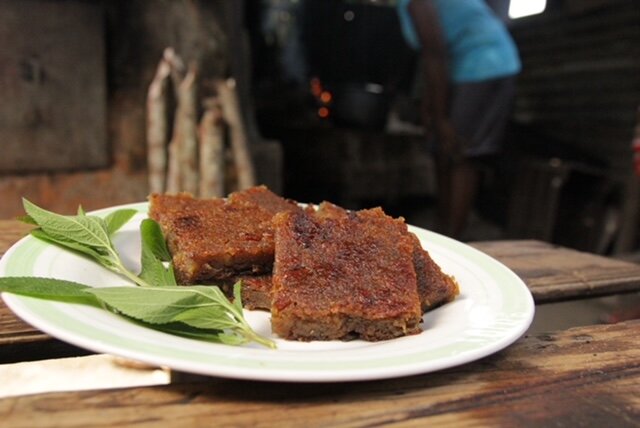Preserving Garifuna Traditions During the Pandemic Holiday
I can’t recall a single Christmas where tamales weren’t on the menu. Despite the subtle shifts in my family’s holiday spread—pernil asado, baked chicken or stewed beef; alternating between rice and beans with coconut milk and yellow rice, pan de maiz and tableta de coco, dabledu or another Garifuna treat of choice—you could always expect to find tamales present. But this year will likely be different. With the ongoing COVID-19 pandemic, my rather new tradition of learning to make this holiday staple alongside my abuela, mother, and aunt has been brought to a standstill.
As a Bronx-born Garifuna woman, food has always been the bridge between my Afro-Indigenous roots found on the Caribbean coast of Honduras and my U.S. upbringing. My earliest memories involve conversation over hudutu, a ball of mashed plantain, served with my favorite coconut stew and king fish, crabs, or some variation of seafood. It was a Saturday ritual in my home and a mouth-watering meal I refused to pass up. My father pounding the green and singular ripe boiled plantains in the hana signaled the countdown for plates to be set. And, shortly after, seats filled with several hungry mouths ready to indulge in a recipe that traces our lineage across Honduras, Guatemala, Nicaragua, and Belize to St. Vincent and the Grenadines and back to Central and West Africa. Our 223-year-old legacy passed down through storytelling and the preservation of foodways cultivated on our ancestral lands and brought to places we’ve redefined as home.
My abuela’s kitchen hosts some of my fondest memories. In addition to holidays and birthdays, most Sundays, pre-COVID, you could find aunts, cousins, and an uncle or two nestled in my grandparent’s South Bronx apartment. No room was quiet. If the space wasn’t filled with laughter then someone was sharing a story in Garifuna, the preferred language spoken among the elders in my family, and resounding phrases like “ai hába” (look/look at that), “hócha bai” (try it) or “semeti” (delicious) could be heard throughout their home.
With Nochebuena and Christmas fast approaching, I can’t help but think about the last batch of tamales I helped prepare for the holiday. While I mixed the masa, later placing the dough on the aluminum foil and stuffing it with pork, olives and other fixings, and wrapping each tamal tightly before dropping them into the pot of boiling water, I listened intently to my abuela’s stories of selling kéké, also known as Johnny Cakes, and culinary lessons passed down from Mamá, my bisabuela. I could see how our conversation transported her back to Iriona Viejo.
“That food, that taste, that smell, that texture, the color—it immediately takes you home and it soothes your soul,” says Isha Gutierrez-Sumner, author of the forthcoming cookbook titled Weiga, Let’s Eat! “When you reminisce about Honduras, and you eat something, you satisfy that need.”



Gutierrez-Sumner has invited us into her kitchen, sharing two holiday recipes from the first-ever, soon-to-be released Garifuna cookbook.
PETÉTA
Sweet purple potato bread: This aromatic savory pie like bread is the most festive, soft and rich in natural flavors. This sweet bread always makes an entrance during special holidays.
Serves 6 to 8.
Recipe
15 Lbs. of purple yams (Peel—Wash—Grate)
4 cups of creamy coconut milk
2 cups of sugar (½)
1 ½ Tablespoon of freshly ground cinnamon
I pinch of Allspice
½ cup of vanilla
1 Teaspoon of salt (sea salt)
Directions
1. In a large bowl, grate the yams. Once grated, pick out all the pulpy bits of yam. No strings!
2. Mix in the cinnamon, vanilla, salt; gradually add sugar to taste, depending on the sweetness of the yams. Slowly mix in the coconut cream paying close attention to texture.
3. Place a large deep skillet on medium- low heat. Slow cook grated yam mixture on stove top. Turn consistently while cooking on stove top, until it turns brown and sticks together. It cooks for about 30 to 45 minutes or until sticky and brown.
4. In a 9” x 13” baking pan, spread coconut oil or unsalted butter to grease the pan thoroughly. Spread evenly on the bottom and sides of the pan using hands. Pour the cooked yam inside a rectangular pan and smooth out the top of the bread with a spatula.
5. Bake for 30 minutes. Turn it over with the same size pan and broil for 5 to 10 minutes just to nicely brown the bottom, which now becomes the top.
Let it cool off before serving.
KÉKÉ
In Belize, these thick crackers are known as Johnny Cakes; in Honduras. we call them KéKè. Traditionally they are baked in the evening so that fishermen, who go fishing or travel long distances for work, have food that will not get spoiled quickly.
This recipe yields 20 delicious Kékés but, you can easily cut everything by half and make 10.
Recipe
7 cups of flour (20)
3 teaspoons of sea salt
2 ½ cups of coconut milk (2 cans of coconut milk La Fe)
2 teaspoons +1 tablespoon of light brown sugar
1 ½ teaspoon of baking powder (Argo Brand)
½ cup of mazola corn oil
½ stick of unsalted butter melted (Country Crock)
Directions
1. In a medium size bowl, place the flour and make a hole in the center.
2. Add salt, sugar, baking powder, oil and unsalted melted butter.
3. Mix it all together, gradually add the coconut milk. Bringing the flour together.
4. Once the dough is together, it can be placed in a flat, clean, dry wooden surface so that it can be easily kneaded or continue kneading in the bowl.
*I suggest kneading the flour for at least 10 minutes.
5. Cover the kneaded dough with a clean cloth for 15 minutes.
6. Cut the dough into 2 ½ inches to 3 depending on how big you want your Kékés
7. Mold the dough into a perfect circle and lightly press down. (Flatten it just so.) With a fork, facing its back toward the Kékés, start pressing in your design. (This design is what defines what a kéké is.) Preheat the oven to 350 degrees then increase it to 375 degrees once you place your Kékés in the oven and bake for about 35 to 40 minutes or until lightly browned.
Janel Martinez is a multimedia journalist & the founder of award-winning blog, Ain't I Latina?, an online destination celebrating Afro-Latinx womanhood. The Bronx, NY native holds a BA in Magazine Journalism & Sociology from Syracuse University. Her writing has appeared in Adweek, BuzzFeed, ESSENCE, Oprah Magazine, & Remezcla, among other publications. She is a frequent public speaker discussing media, culture & identity, as well as diversity at conferences & events for Bloomberg, NBCU, SXSW, Harvard University & more. Her work will be included in the forthcoming anthology, Wild Tongues Can't Be Tamed, which will be published in fall 2021 by Flatiron Books.

